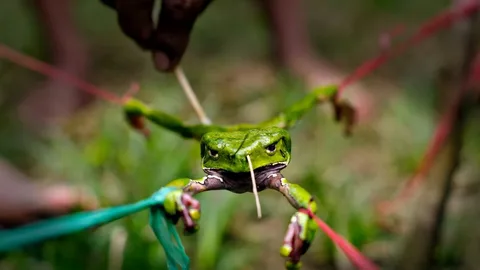
Introduction to Kuripe
Kuripe is a traditional indigenous tool used primarily by the Amazonian tribes for self-administering medicinal snuffs, notably rapé. Made from materials such as bamboo, wood, or even bone, the kuripe features a simple yet effective design: a hollow tube that allows users to inhale the powdered substance directly into their nostrils. The practice is steeped in rich cultural significance, embodying ancient rituals and spiritual connections to nature. While many may see it merely as a tool, the kuripe represents a deeper understanding of holistic healing, community bonds, and respect for the environment. This article delves into the various facets of kuripe, exploring its cultural relevance, health benefits, and the rituals associated with its use.
Cultural Significance of Kuripe
The cultural roots of the kuripe trace back to the indigenous peoples of the Amazon rainforest, where it has been used for centuries. For these communities, the kuripe is more than just a practical tool; it embodies their worldview and relationship with the environment. The act of using a kuripe often takes place in communal settings, where sharing and mutual support are emphasized. The ritual of using rapé with a kuripe is not merely about the substance itself but about the connection it fosters among individuals.
Traditionally, the kuripe is associated with various ceremonies, from healing rituals to rites of passage. Elders and shamans often guide these practices, providing wisdom and spiritual insights. As such, the kuripe serves as a bridge between the physical and spiritual realms, allowing users to tap into ancestral knowledge and energy. In modern times, the resurgence of interest in indigenous practices has led to a broader appreciation of the kuripe and its significance within Amazonian cultures.
Health Benefits and Medicinal Use
The primary purpose of the kuripe is to facilitate the inhalation of rapé, a powdered blend of medicinal herbs and tobacco. The health benefits associated with rapé are numerous, ranging from physical to psychological improvements. Many users report feeling a heightened sense of clarity and focus following its use, along with a reduction in anxiety and stress. The medicinal properties of rapé are believed to promote overall well-being, making it a popular choice among those seeking natural healing methods.
In addition to its psychological benefits, rapé is also used for various physical ailments. Some tribes believe it can help with respiratory issues, headaches, and even digestive problems. The plant components of rapé can vary widely, incorporating ingredients known for their healing properties. This diversity allows for a tailored approach, with individuals choosing specific blends that resonate with their needs. Furthermore, the act of using a kuripe is often accompanied by deep breathing and meditation, which enhances its therapeutic effects and encourages mindfulness.
Rituals and Practices Involving Kuripe
The use of the kuripe is deeply intertwined with rituals and practices that enhance its spiritual and healing properties. Typically, before using a kuripe, participants engage in preparatory practices, such as cleansing rituals or prayer, to set intentions and create a sacred space. This focus on intention is vital, as it is believed that the user’s mindset significantly influences the experience and outcome of using rapé.
During communal ceremonies, the kuripe may be passed among participants, fostering connection and shared experiences. The act of sharing rapé is seen as an expression of trust and camaraderie, reinforcing social bonds within the community. Additionally, many shamans or experienced users may lead guided sessions, providing insights and encouraging participants to reflect on their experiences. The overall environment during these rituals is one of respect, reverence, and openness, allowing individuals to connect with themselves, others, and the natural world on a profound level.
Conclusion: Embracing the Legacy of Kuripe
The kuripe serves as a powerful reminder of the wisdom and traditions of indigenous cultures. Its use reflects a deep respect for nature and an understanding of holistic health that is increasingly relevant in today’s fast-paced world. As interest in natural remedies and spiritual practices grows, the kuripe and its associated rituals offer a pathway to reconnect with ourselves and the world around us. By embracing the legacy of kuripe, we can appreciate the intricate relationship between culture, healing, and community, encouraging a broader dialogue about the importance of preserving indigenous knowledge and practices.
In conclusion, whether one views it as a cultural artifact, a healing tool, or a spiritual instrument, the kuripe represents a rich tapestry of tradition that continues to resonate with individuals seeking deeper connections and holistic well-being. As we explore the benefits and significance of this remarkable tool, we are reminded of the power of ancient practices and their relevance in our contemporary lives.